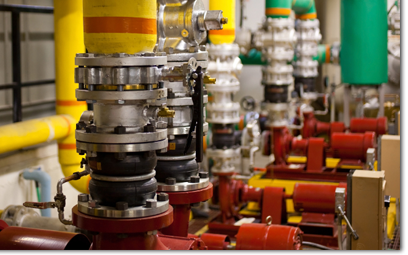Asphalt (or bitumen as it is commonly referred to outside the U.S) is derived from crude oil and is the portion which remains after distillation. Due to the varying sources and grades of crude oil, the composition of raw asphalt can vary widely. Therefore, to ensure consistency and quality, asphalt is modified with various additives.
Some additives, also called binders are designed to lower the mixing or laying temperature of asphalt compared to a conventional asphalt mixture. A lower viscosity or melting point of the asphalt makes it possible to work the asphalt at 250°F instead of 300°F, thus saving fuel costs needed to heat the fluids. Lower processing temperatures also reduce oxidation of the asphalt which can weaken the mixture and shorten its useful life.
Bitumen is often modified with petroleum oil blends (also known as cutbacks since a fraction of the distilled oil is put back into the residual asphalt). These reintroduced solvents create an emulsion which is liquid at room temperature and will dry into an impermeable membrane once the volatile compounds evaporate.
Bitumen may be mixed with a wide variety of petroleum fractions for different applications. Volatile light fractions (white spirit, naphtha) are used for cutbacks where rapid drying is required. Medium fractions (kerosene, gas oil), are used where a longer drying time is permissible. Heavier cuts (in the lube oil range) are used where permanent softening is required - these blends are virtually equal to a softer grade of bitumen.
Bitumen can also be modified by the addition of wax blends. Paraffin wax is used to reduce the viscosity when hot while leaving the low temperature properties largely unchanged and/or to reduce surface stickiness (tackiness) when cold.
In addition, there are binding agents that improve the mixture’s ability to be colored or minimize the bitumen odor. Polymers, such as styrene butadiene styrene (SBS) or ethylene vinyl acetate copolymer (EVA) are added to the asphalt to improve its characteristics. SBS prevents the asphalt from softening in the summer, when the temperature of the applied material may exceed 150°F. EVA prevents the cracking that occurs when the material contracts during the winter months.
Max equipment specified:
Precise ratio control of these additives is achieved by using a Max meter in both batch-blending operations and as part of an on-the-fly blending and packaging operation. Max’s line of helical rotor meters, the Model H241, H242 are the key to tight recipe control. Their high resolution, insensitivity to viscosity and inherently low pressure drop make them an ideal fit for the various materials which are being blending in these applications. If you would like a quote for a similar project, please let us know.
"You guys are awesome. I couldn't ask for better support" - A Thorne, Henry Co.



